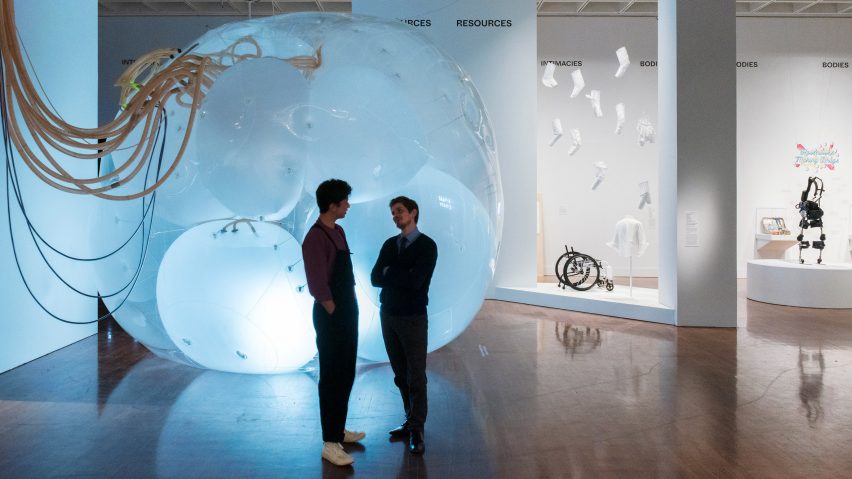
Today's innovations could be "redundant in five years" says curator of Designs for Different Futures
The Designs for Different Futures exhibition at the Philadelphia Museum of Art collates projects to tackle some of today's biggest issues – including an arched pavilion for harvesting crickets, clothes that grow and a font illegible to computers.
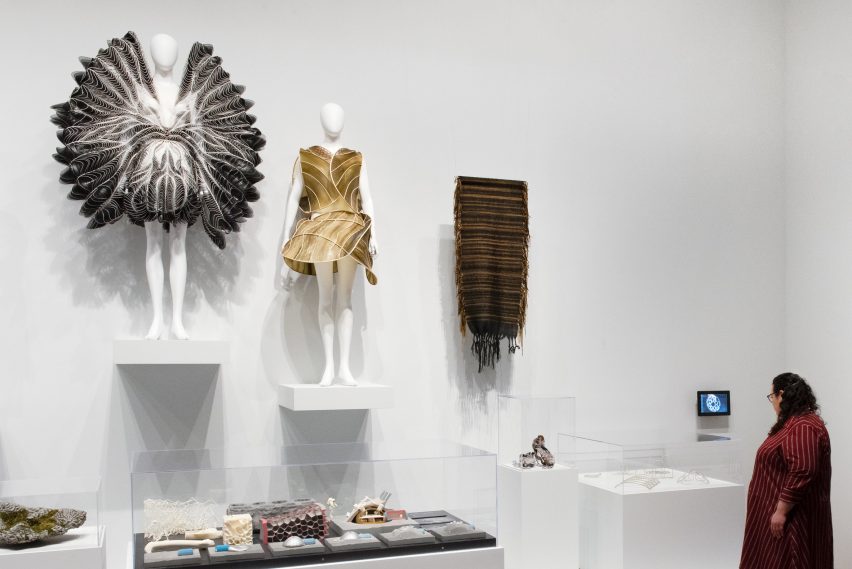
Designs for Different Futures comprises 80 works that address the challenges and opportunities humans may encounter in the future in 11 categories: resources, generations, earths, bodies, intimacies, foods, jobs, cities, materials, power and data.
"Designs for Different Futures, deliberately plural, thinks about futures as multiple, socially located and contingent," curator Michelle Millar Fisher told Dezeen.
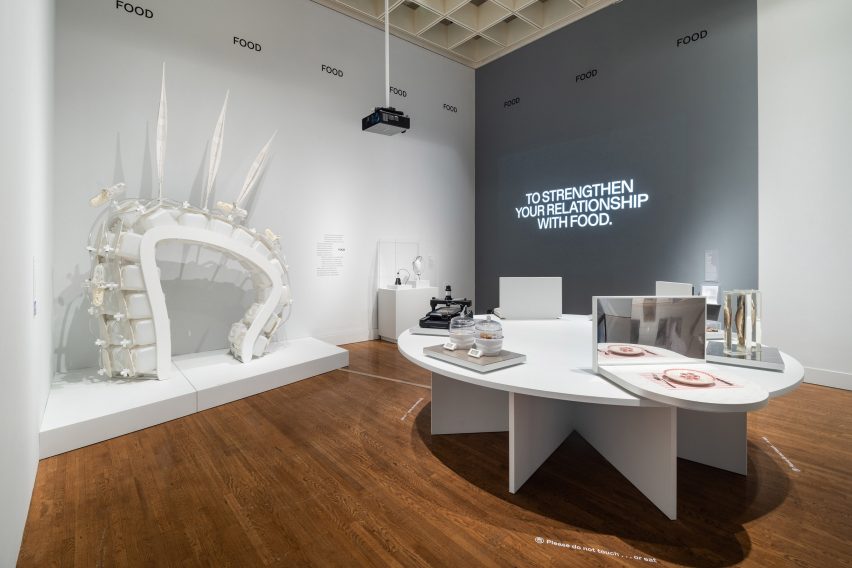
"The idea was to centre it around things that shape our lives on a daily basis, so products and objects that we find, in our daily use, but also speculations on what comes next," she added.
Objects, concepts and ideas included in the showcase are intended to make visitors reflect on what might be to come, and explore a wide-range of issues, such as the impact of robotic technology, feeding the world's population and privacy.
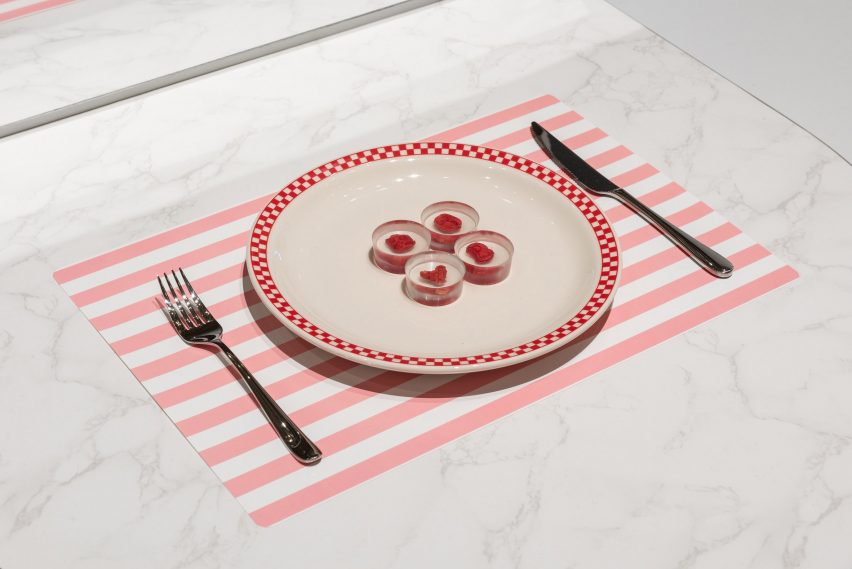
"We started really thinking that it was the ideas, the concepts, the provocations about what design could be, what the future could be, that were the most interesting and we wanted to raise questions and ask our visitors to question themselves," curator Kathy Hiesinger told Dezeen.
Hiesinger added that it could only be speculative, because of the rate of change in the industry.
"In a way the show could be absolutely different in five years, because technology is rapidly evolving," she said. "As we are sitting here speaking the world changes, many of the issues the show addresses will be redundant in five years or will have morphed into something else."
Centrally located inside the exhibition space is Another Generosity, an inflated sphere that changes in size and colour in response to carbon dioxide and temperature levels in its immediate surroundings.
It demonstrates the carbon footprint humans leave behind and the effect that has on the environment. The transparent pod was realised by Finnish architect Eero Lundén and first displayed at the Venice Architecture Biennale in 2018.
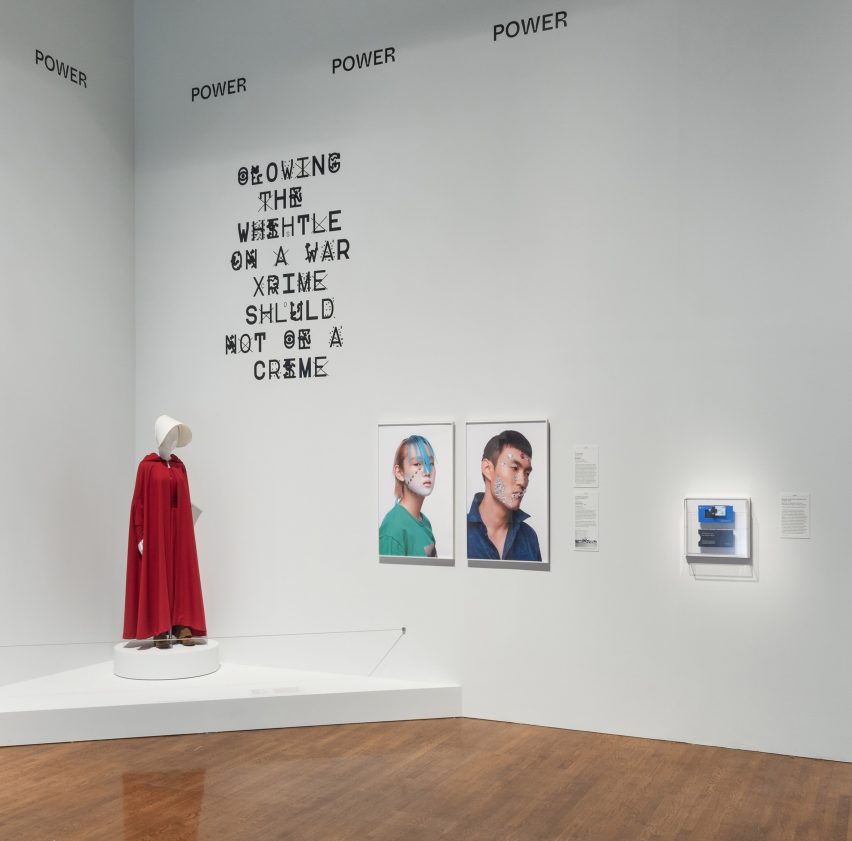
Also featured is a large arch-shaped pavilion covered in pods and spikes used to house crickets during the harvesting process. The prototype, by Terreform One, cycles crickets through from their hatching to their harvesting, when they are converted into an edible "protein-rich powder".
In the Power section is a handmaid costume, designed by Ane Crabtree, from the television show adaptation of Margaret Atwood's book The Handmaid's Tale, which chronicles a utopian future. In an interview with Dezeen Crabtree explained how the garment has become a symbol of protest amongst women.
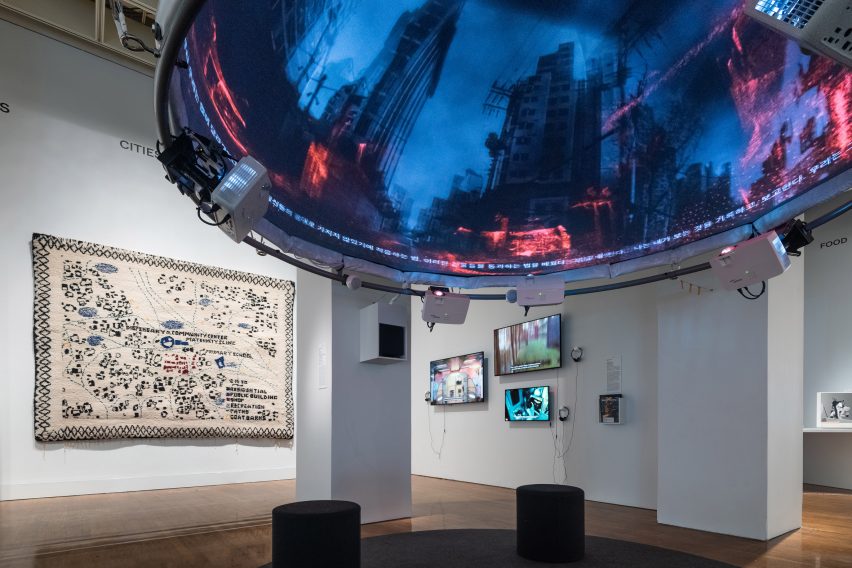
Situated above the red cloak and white bonnet is a quote about whistleblowing, written in a typeface that appears illegible at first glance. ZXX created by Sang Mun was designed to be interpreted only by humans and undetectable by artificial intelligence and other text scanning software.
Mun's design exemplifies a piece of the future that, like many other works in the exhibition, is deeply rooted in the present and something that could take on new meanings and forms as time goes on.
"The ZXX Typeface up in the Power section is from 2012 and it was right when the Ukraine crisis blew up in the New York Times, and the headlines were about whistleblowers it took on very new relevancy, by total accident," Fisher said.
Also on display is a video presentation of research by Diller Scofidio + Renfro that examined satellite imagery to surface the inequality of access to electricity around the world. The architecture firm developed the project with Laura Kurgan, Robert Gerard Pietrusko and the Columbia Center for Spatial Research.
Practice Foster + Partners' 3-D printed lunar settlements that provide a glimpse of a life beyond Earth are also on show.
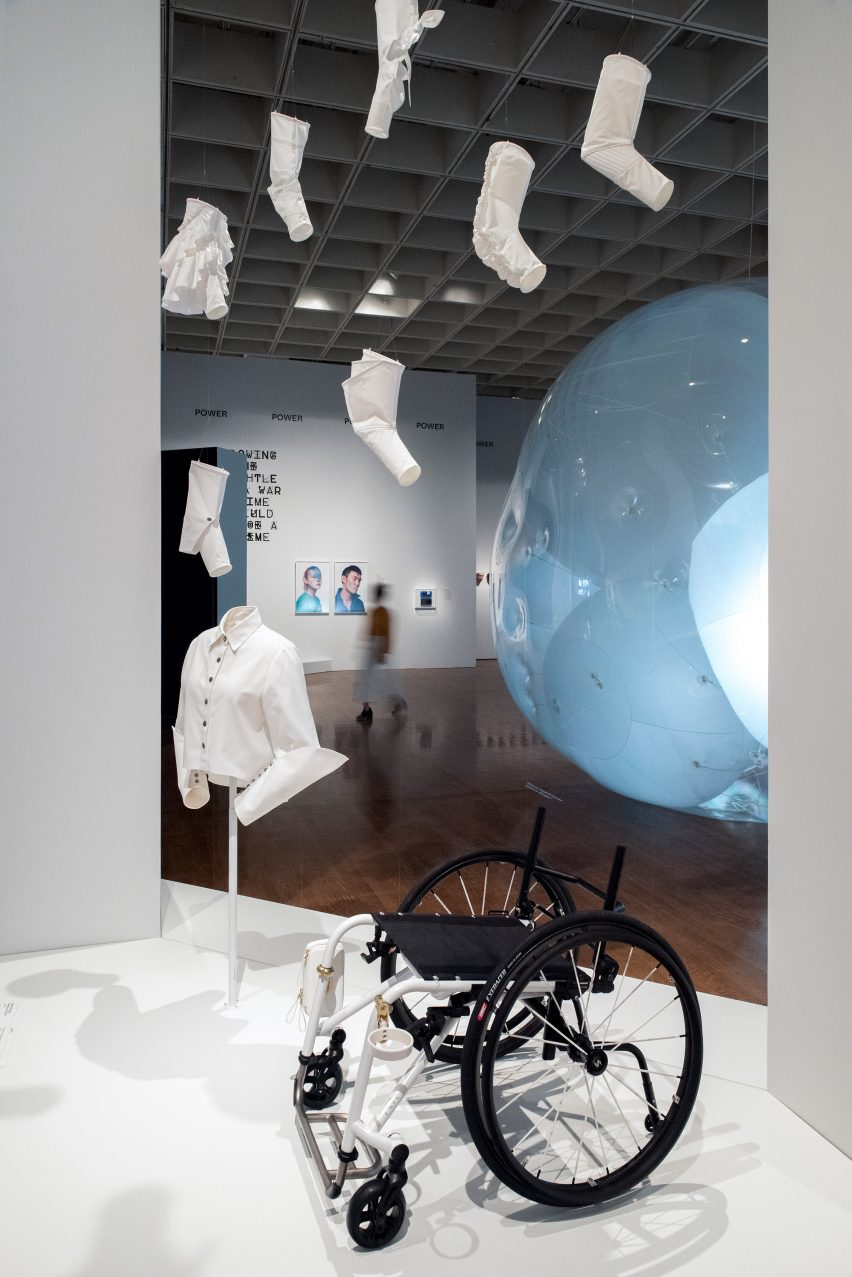
Other speculative concepts exhibited include an interactive installation where visitors see the world from the perspective of an autonomous vehicle, an audio recording of a genderless voice, children's clothes made from recycled fabrics that expand as a child grows, examples of genetically modified foods, and medical devices and concepts designed to ease challenges currently faced by disabled individuals.
The education department at the Philadelphia Museum of Art created the Futures Therapy Lab, as part of the exhibition. It allows visitors to reflect on their experiences with a library of titles, activities and a lecture series that includes talks by designers with works on display.
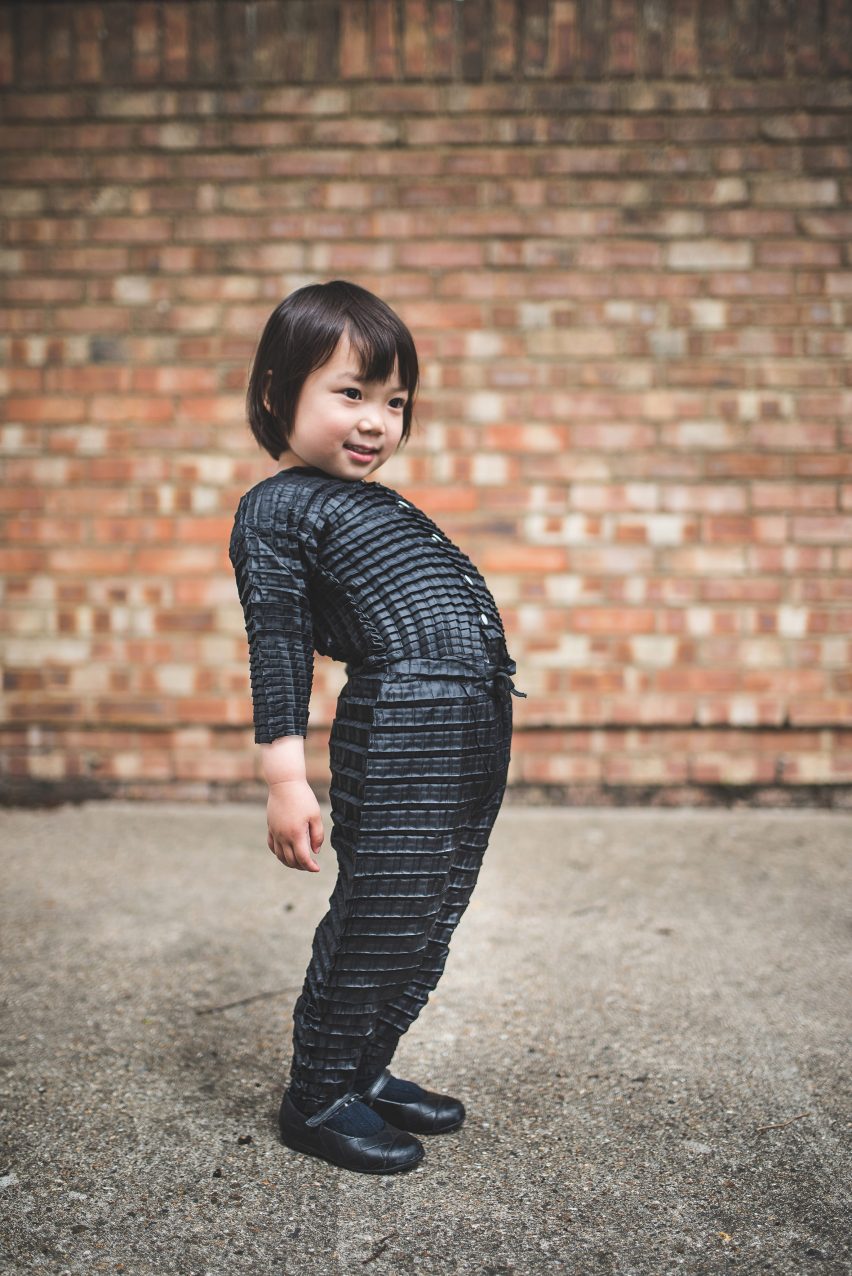
Designs for Different Futures will be on view at the Philadelphia Museum of Art from 22 October 2019 to 8 March 2020, after which it will move to the Walker Art Center in Minneapolis and then the Art Institute of Chicago.
Architecture Frank Gehry is working on a renovation of the layout and interiors of the museum which was built in the 1920s. Past exhibitions at the museum have included a showcase of furniture by designer Patricia Urquiola and an installation of colourful strings by architect Diébédo Francis Kéré.
Photography is by Joseph Hu and courtesy of the Philadelphia Museum of Art.